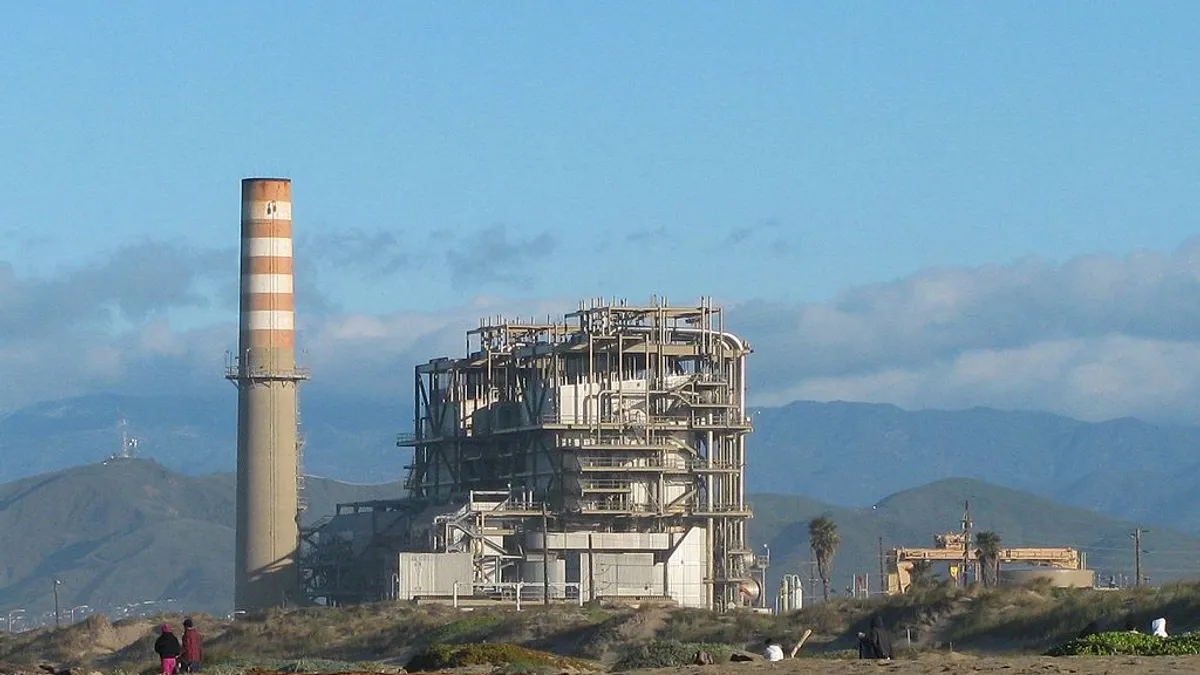Dive Brief:
- Environmental and renewables advocates in California are concerned that regulators' attempt to ensure a reliable electric grid this summer will result in contracts for additional gas capacity, threatening the state's clean energy goals.
- The California Public Utilities Commission (CPUC) last month issued a proposal directing the state's investor-owned utilities to contract for capacity — including additional capacity from existing power plants — that can serve peak and net peak demands during the summer. The commission can vote on the proposal on Feb. 11 at the earliest.
- The pending vote comes as the CPUC and California Independent System Operator race to prepare the grid for summer 2021, and prevent a repeat of the rolling outages that occurred in the state last year.
Dive Insight:
Last August, the Western U.S. experienced a record-breaking heatwave, eventually causing CAISO to initiate rolling blackouts in California for the first time in two decades. Following the blackouts, state regulators put together a root cause analysis that, among other things, recommended expediting procurement processes to ensure additional resources are online by 2021.
In November, the CPUC opened a rulemaking to tackle the issue of system reliability in 2021, with a focus on measures that could be implemented as soon as possible. The CPUC's proposal, issued under this proceeding, would direct Pacific Gas & Electric, Southern California Edison and San Diego Gas & Electric to contract additional power capacity for the summer, the costs of which can then be recovered from their customers.
The proposal identifies three kinds of resources that the utilities can consider: additional energy storage resources, contracting generation that is currently at risk of retirement, and "incremental capacity from existing power plants through efficiency upgrades, revised power purchase agreements, etc."
Attorneys from the Sierra Club and the California Environmental Justice Alliance, however, are concerned that including the last resource type would result in contracts for additional gas capacity, by adding efficiency upgrades to existing gas power plants. Gas plants lead to environmental and health risks that uniquely affect disadvantaged communities, that house more than half the gas plants in the state, the groups argued in comments filed with the CPUC last week.
"A loophole in the [proposed decision] that could allow additional capacity at these fossil-fueled generators will exacerbate these harms and run counter to California's climate goals and air quality requirements," they added.
These concerns were echoed by the Center for Energy Efficiency and Renewable Technologies, which urged regulators to instead look at ways to procure cleaner energy options before investing in additional gas-fired generation. The group noted that the preliminary root cause analysis released last year did not identify natural gas as the only resource that could meet the grid's needs this summer, and opposed the commission's potential move towards long-term additional gas procurement before looking into distributed energy resources and demand-side management that could be online by summer 2021.
The commission should direct utilities to prioritize energy storage resources over gas capacity, the Union of Concerned Scientists agreed in comments, adding that "long-term contracting with gas-fired generation would run counter to California's clearly stated clean energy policy directives."
Solar, storage sectors push for 2022 procurement
The solar and storage industries, meanwhile, are critical of the proposal's sole focus on summer 2021, and urged regulators in comments to consider resources for 2022 as well. Given the short timeline that the sector is working with, it's unlikely that utilities will be able to secure significant amounts of new supply capacity this year, the Solar Energy Industries Association, Vote Solar and Large-Scale Solar Association said in joint comments.
If the commission acts now, more renewable resources could be brought online by summer 2022, rather than relying on fossil fuel generation, the groups argued. And without a similar directive to authorize procurement for 2022, regulators will "exacerbate a lack of confidence in the California regulatory environment, rendering future procurement (on an expedited basis or not) more difficult," they added.
The California Energy Storage Alliance echoed this view, pointing out that storage resources in particular need at least 12 to 14 months after contracts are approved by the commission to come online — meaning that if regulators don't authorize the procurement quickly, storage projects may not be able to meet demand even in 2022.
One group that pushed back on the criticism of the proposal, however, was the Independent Energy Producers Association, which said in comments that focusing on supply capacity for 2021 is "a logical and prudent response to the conditions that led to the August outages."
The blackouts that occurred in August emphasize the fact that a reliable grid is critical to ensure continued public support for clean energy goals, the group argued in comments — and further blackouts could affect popular support for both renewables as well as California's zero-carbon ambitions.
"The [proposed decision] is a limited and responsible reaction to the conditions that led to the August outages, and IEP respectfully urges the Commission to act quickly to approve the [proposed decision] as written," the group said.















